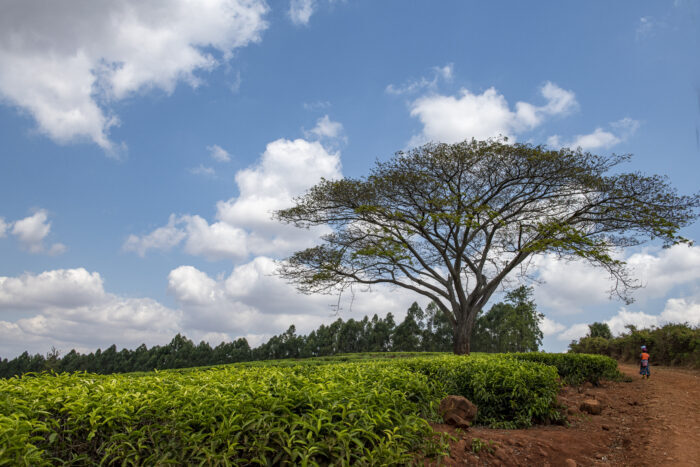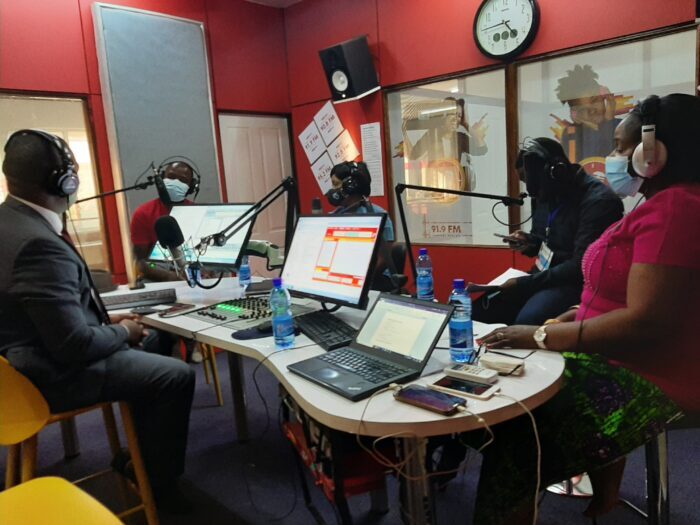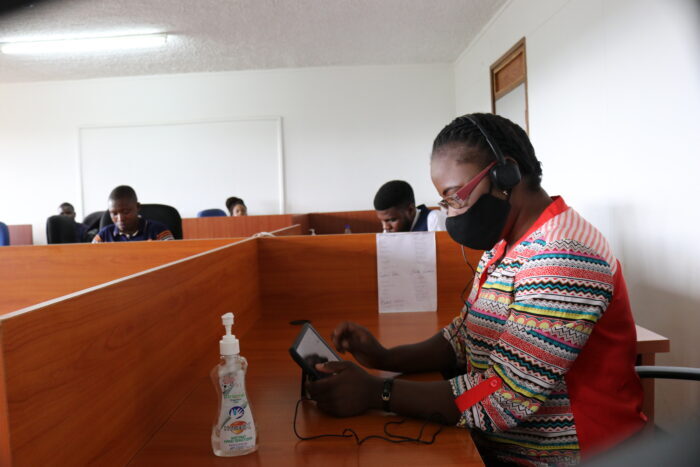One year ago, accurate and timely information on symptoms, transmission, and prevention of COVID-19 was hard to come by in rural Malawi—but that did not stop the pandemic from eventually reaching every corner of the country. On April 3, 2020, Malawi reported its first three cases of COVID-19, with 36 confirmed cases by the end of the month.
As people fell ill—especially in vulnerable populations, such as the elderly and those living with HIV and TB—suspicion of the novel coronavirus and a low understanding of prevention methods were formidable barriers to slowing the spread of this deadly disease.

The Malawi Ministry of Health needed to respond to the crisis with agility, innovation, and speed, so it turned to a longtime partner, the Elizabeth Glaser Pediatric AIDS Foundation (EGPAF). EGPAF has been working in Malawi to end AIDS in children, women, and families since 2001, and its expertise in local healthcare infrastructure, infectious diseases, and implementation science positioned the organization perfectly to support the Malawi COVID-19 response.
Understanding the epidemic
“As our epidemic grew, it was increasingly important to know the distribution of the coronavirus and to identify hotspots as they developed. This would help us to plan and direct resources to where they are needed most,” says Dr. Thokozani Kalua, deputy director of the dept of HIV/AIDS at the Ministry of Health.
The Ministry of Health and the U.S. Centers for Disease Control and Prevention (CDC) collaborated with EGPAF to develop and implement a phone-based surveillance system to monitor trends of signs and symptoms for COVID-19 and its impact on healthcare access for people living with HIV as well as for the general population.

For this project members of the syndromic surveillance team called randomly generated Malawi phone numbers, sought consent to conduct a brief interview, and then proceeded with a 15-minute questionnaire, during which they asked participants to self-report influenza-like illness, COVID-19-like illness, household deaths, access to healthcare services, and knowledge of COVID-19 and prevention measures. The survey targeted the general public across the country including adults living with HIV/AIDS in EGPAF-supported sites.
“Basically, we wanted to identify hotspots and track the impact of COVID-19,” says Thulani Maphosa, Ph.D., director of Research and Evaluation at EGPAF-Malawi.
The first phase of the survey was implemented from July to December 2020. By the end of the year, researchers had contacted more that 44,000 members of the general population and more than 10,000 people living with HIV.
“Collecting this information through telephone interviews is innovative,” says Kalua. “It allows us to collect the data much more quickly than we would using traditional means. On top of that, it ensures that we do not put anyone at risk by violating physical distancing measures.”
The survey strategy was successful and provided the backbone behind further COVID-19 response planning. The CDC has since supported EGPAF to enhance and extend the survey for an additional 12 months—into 2022.
Knowledge is power
While the telephone surveys have greatly improved the government’s response to COVID-19, they have also helped quell skepticism and fear around COVID-19.
“Mostly, when we first introduced the subject to respondents, they tended to doubt us,” says Kettie Juma, a study nurse, “but in the long run, they got excited because we were able to enlighten them further on the signs and symptoms of coronavirus.”
“Mostly, when we first introduced the subject to respondents, they tended to doubt us but in the long run, they got excited because we were able to enlighten them further on the signs and symptoms of coronavirus.” Kettie Juma, study nurse
“Where I stay is a typical rural set-up, and access to information is difficult,” reported one of the interviewees, when asked about the value of the survey. “Thank you very much for highlighting some of the signs and symptoms of COVID-19. I didn’t know all this.”
“In order to raise awareness and address misconceptions that Malawians might have, we developed messages for radio, TV, and social media to mobilize the general public and people living with HIV/AIDS to actively participate in the survey,” says Prince Henderson, EGPAF- Malawi’s lead communications and advocacy officer, who developed and implemented the communications strategy. Staff from EGPAF and the Ministry of Health visit popular public radio shows as guest experts to answer call-in questions about the survey and address any concerns people have.
In addition to the active research of the surveillance survey, EGPAF and the Ministry of Health worked with Luke International—a nongovernmental organization—to establish an COVID-19 hotline within the Public Health Institute of Malawi emergency operations center. The hotline supported the multi-disciplinary department of the Government to coordinate the response.
Digital Lab Information Systems

While surveillance for COVID-19 is an essential step in combatting the pandemic, it was only the first step in a thorough response plan. Building on the ever-expanding knowledge about the novel coronavirus, EGPAF and the Ministry of Health collaborated to target gaps and inefficiencies the health care system, improving access and quality of care for Malawians as they rose to meet the crisis.
Together, EGPAF and the Ministry’s Department of Diagnostics developed an electronic application that supports labs in tracking, analyzing and reporting the results of COVID-19 samples. This application has improved communication between clinics and the 13 molecular laboratories that utilize the national electronic reporting system for COVID-19. It has reduced the turnaround time for the COVID-19 results, improving access to timely care and support for patients and minimizing risk of further infections.
The team developed a user-friendly dashboard that provides valuable and immediate analysis, including daily trends, monthly trends, and average turn-around time of results. All of the data can be accessed and used across clinics and testing facilities so that healthcare workers and lab technicians have the latest data at their fingertips.
Improving Infection Prevention
EGPAF also played a key role at the facility level to slow or stop the transmission of COVID-19. To prevent healthcare-associated spread of the COVID-19 and maintain essential health services, EGPAF leveraged its presence at antiretroviral clinics in 179 health facilities. The organization helped the Ministry of Health set-up appropriate infection prevention and control services—especially within outpatient departments. Together, they established protocols to ensure rapid identification of suspected COVID-19 cases among patients, healthcare workers, and visitors. EGPAF supported public health authorities to assess readiness and to train healthcare workers.
EGPAF also played a key role at the facility level to slow or stop the transmission of COVID-19, leveraging its presence at antiretroviral clinics in 179 health facilities.
One year later
As of mid-March, there have been more than 33,000 confirmed cases of COVID-19 and more than 1,100 deaths in Malawi, a nation of 19 million. EGPAF-Malawi Director Veena Sampathkumar says that by investing in these systems, Malawi was much better equipped to support the second wave of COVID-19.
On March 5, the first shipment of COVID-19 vaccine—360,000 doses of the Oxford-AstraZeneca vaccine—arrived in Lilongwe, Malawi, providing hope of greater control of the COVID-19 pandemic in Malawi—and possibly its end. Still, the virus continues to spread in Malawi, just as it does throughout the world, even as shots are administered. The Ministry of Health and EGPAF continue to call out to mobile phones across the nation, tracking trends and providing education about this highly transmissible virus.




